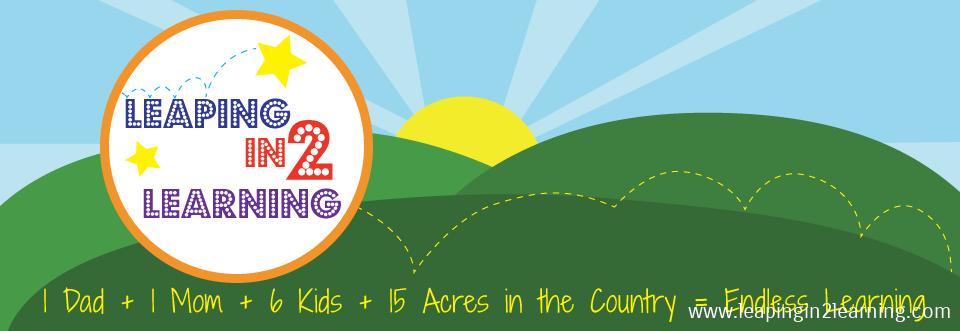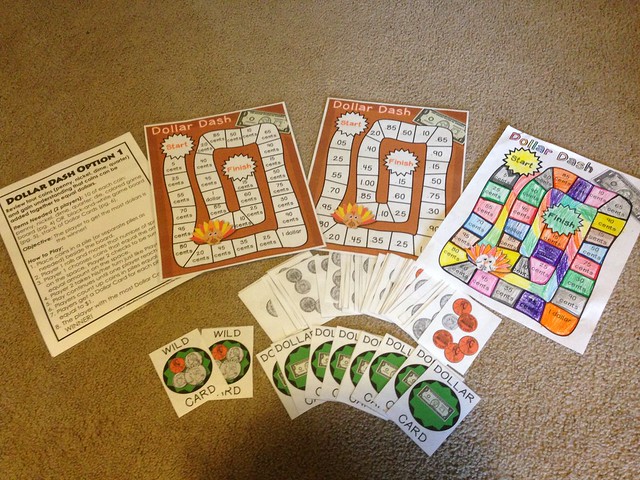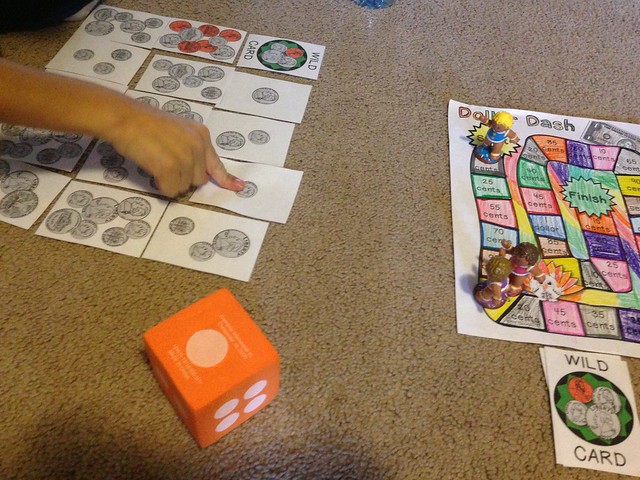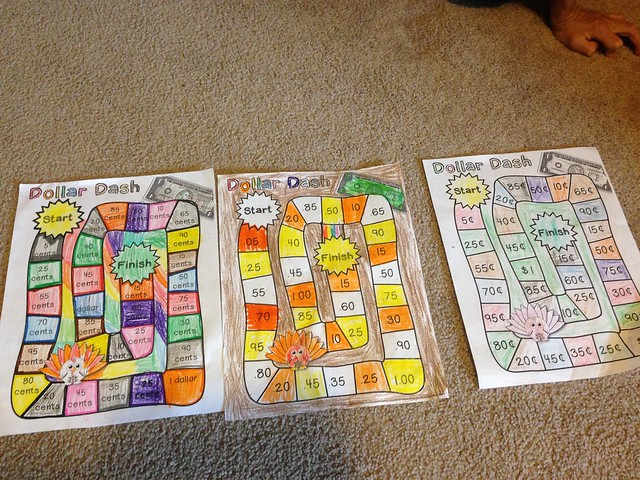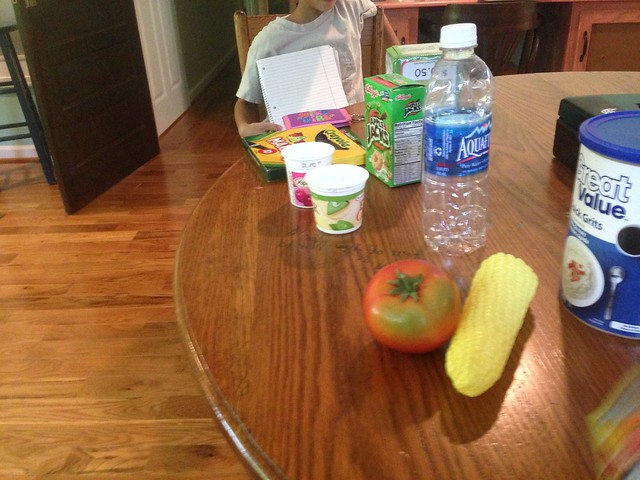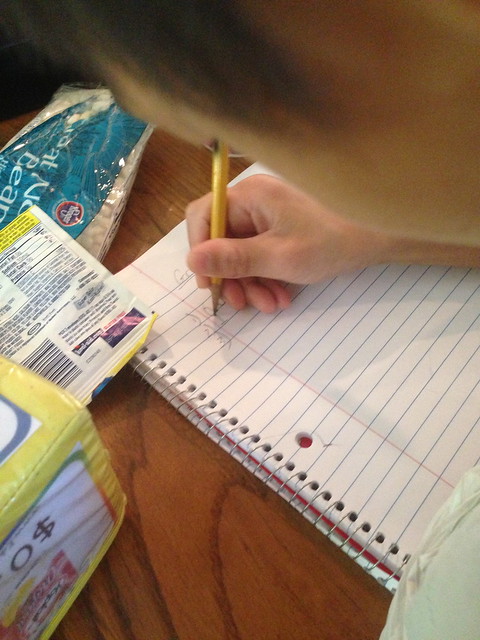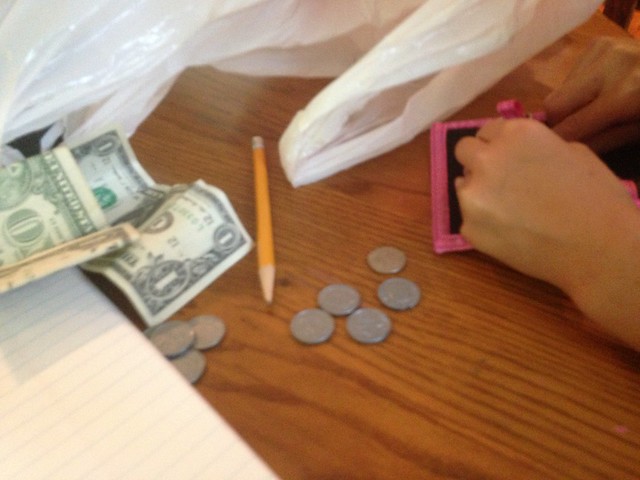Someday we may not have coins in the US monetary system, but for now there are the four basic coins plus a few more. Did you know the US Mint still makes a 50-cent coin? Our 11-year-old son asked for one at the bank, and the teller found him one and saved it. Apparently, while they are in circulation, they aren’t easy to find.
We used this Dollar*Tree tray to play a simple game I called “Make a Dollar.” Li’l Miss and I played first. We just took turns giving the other person a coin value in 5-cent increments. Once the middle of the tray was $1.00 or more, the person who had just added to it got to keep those coins. Li’l Miss caught on quickly, learning that she needed to be sure and not give me an amount to add that would make the coins in the middle equal to $1.00 or more. She also beat me several rounds!
The person who was making the change amount could use any combination of coins. As the game progressed and less coins were available, we also agreed that you had to make the exact amount given which meant the amounts we called out got smaller and smaller. Li’l Dude didn’t catch on as quickly, but he played along with me as his partner.
The four basic coins are the ones I’ve been teaching to our 2nd graders. They know the amounts now, but they still struggle with adding the quarters. As for pennies, nickels, and dimes, they can add those since they are counting by 5s and 10s now with ease.
We have found several books at our local library to help us learn about the coins and master their names and values, as well as the three written forms of them: $0.05, 5¢ and 5 cents for example.
I also made a little Coin Game with a Thanksgiving theme, which we all enjoyed.
Since I made it with both a color and black-and-white version, Li’l Bro and Li’l Miss colored their own set for us to use as well as the color versions.
Since Thanksgiving has long since come and gone, I decided to make some more Money sets for upcoming holidays and seasons. These sets all use the same coin cards, so I have priced them accordingly. Eventually, I hope to make an add-on pack of just the game boards, so that those who have purchased one or more of the seasonal/holiday sets will not need to purchase the coin card pages in order to use the various game boards.
I included all three ways of writing coin values. For instance, 10 cents or 10¢ or $0.10. The coin cards can be used with the included game boards of each individual set or for matching, slap it, evaluation, etc.
I have found the most useful resource to use when learning coin names and values are the coins themselves. I’m not a big fan of the plastic, life-like versions, since the real coins are readily available and inexpensive. I keep them in a metal cash box that locks (and yes, I’m going to be honest in saying some here might get into the box if it wasn’t locked).
We also try to play Grocery Store from time to time. Any chance they get, our children use their own money to buy things they’ve been saving for with birthday money, commission, or found money (yes they will pick up coins they find on the ground!).
Today’s Tip: Use real coins when teaching your children or students about money. Give them real-world opportunities like “Grocery Store” to practice counting the coins!
How about you? Have you found any fun or practical ways to teach your students/children the value and values of money?

